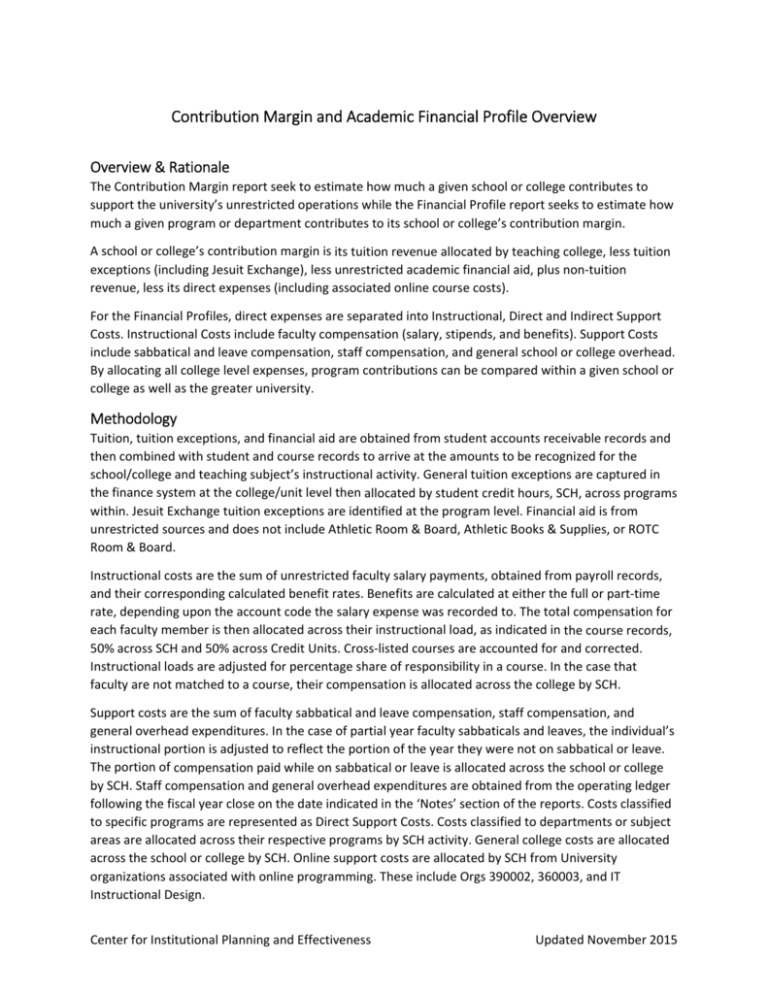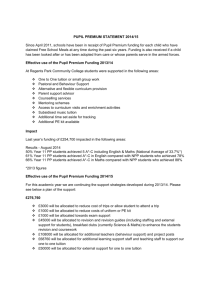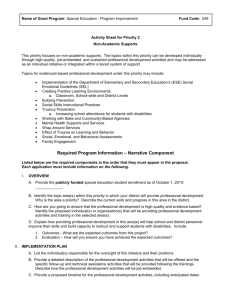Contribution Margin and Academic Financial Profile
advertisement

Contribution Margin and Academic Financial Profile Overview Overview & Rationale The Contribution Margin report seek to estimate how much a given school or college contributes to support the university’s unrestricted operations while the Financial Profile report seeks to estimate how much a given program or department contributes to its school or college’s contribution margin. A school or college’s contribution margin is its tuition revenue allocated by teaching college, less tuition exceptions (including Jesuit Exchange), less unrestricted academic financial aid, plus non‐tuition revenue, less its direct expenses (including associated online course costs). For the Financial Profiles, direct expenses are separated into Instructional, Direct and Indirect Support Costs. Instructional Costs include faculty compensation (salary, stipends, and benefits). Support Costs include sabbatical and leave compensation, staff compensation, and general school or college overhead. By allocating all college level expenses, program contributions can be compared within a given school or college as well as the greater university. Methodology Tuition, tuition exceptions, and financial aid are obtained from student accounts receivable records and then combined with student and course records to arrive at the amounts to be recognized for the school/college and teaching subject’s instructional activity. General tuition exceptions are captured in the finance system at the college/unit level then allocated by student credit hours, SCH, across programs within. Jesuit Exchange tuition exceptions are identified at the program level. Financial aid is from unrestricted sources and does not include Athletic Room & Board, Athletic Books & Supplies, or ROTC Room & Board. Instructional costs are the sum of unrestricted faculty salary payments, obtained from payroll records, and their corresponding calculated benefit rates. Benefits are calculated at either the full or part‐time rate, depending upon the account code the salary expense was recorded to. The total compensation for each faculty member is then allocated across their instructional load, as indicated in the course records, 50% across SCH and 50% across Credit Units. Cross‐listed courses are accounted for and corrected. Instructional loads are adjusted for percentage share of responsibility in a course. In the case that faculty are not matched to a course, their compensation is allocated across the college by SCH. Support costs are the sum of faculty sabbatical and leave compensation, staff compensation, and general overhead expenditures. In the case of partial year faculty sabbaticals and leaves, the individual’s instructional portion is adjusted to reflect the portion of the year they were not on sabbatical or leave. The portion of compensation paid while on sabbatical or leave is allocated across the school or college by SCH. Staff compensation and general overhead expenditures are obtained from the operating ledger following the fiscal year close on the date indicated in the ‘Notes’ section of the reports. Costs classified to specific programs are represented as Direct Support Costs. Costs classified to departments or subject areas are allocated across their respective programs by SCH activity. General college costs are allocated across the school or college by SCH. Online support costs are allocated by SCH from University organizations associated with online programming. These include Orgs 390002, 360003, and IT Instructional Design. Center for Institutional Planning and Effectiveness Updated November 2015 In calculating the budgeted values for the current fiscal year in the Contribution Margin reports, faculty compensation, financial aid, and online categories are derived from combining budgeted costs from outside the school or college with those within the school or college. Part‐time faculty compensation budgets under the Provost are allocated across the schools and colleges based the prior fiscal year’s part‐time faculty compensation activity. Undergraduate financial aid is allocated by teaching college based on the prior fiscal year’s average discount rate. Budgets for online programs outside the schools/college are allocated based on the budgeted SCH for such programs. In the case of Arts & Sciences and Law, special purpose centers and organizations have their financial activity excluded for the purpose of comparability of the reports across schools and colleges. Arts & Sciences excludes activity from the following: McCarthy Center, Lane Center, KUSF, and Ricci Library Orgs. Law excludes the following: Information Technology, Registrar, Alumni Development, and Library Orgs. Center for Institutional Planning and Effectiveness Updated November 2015





